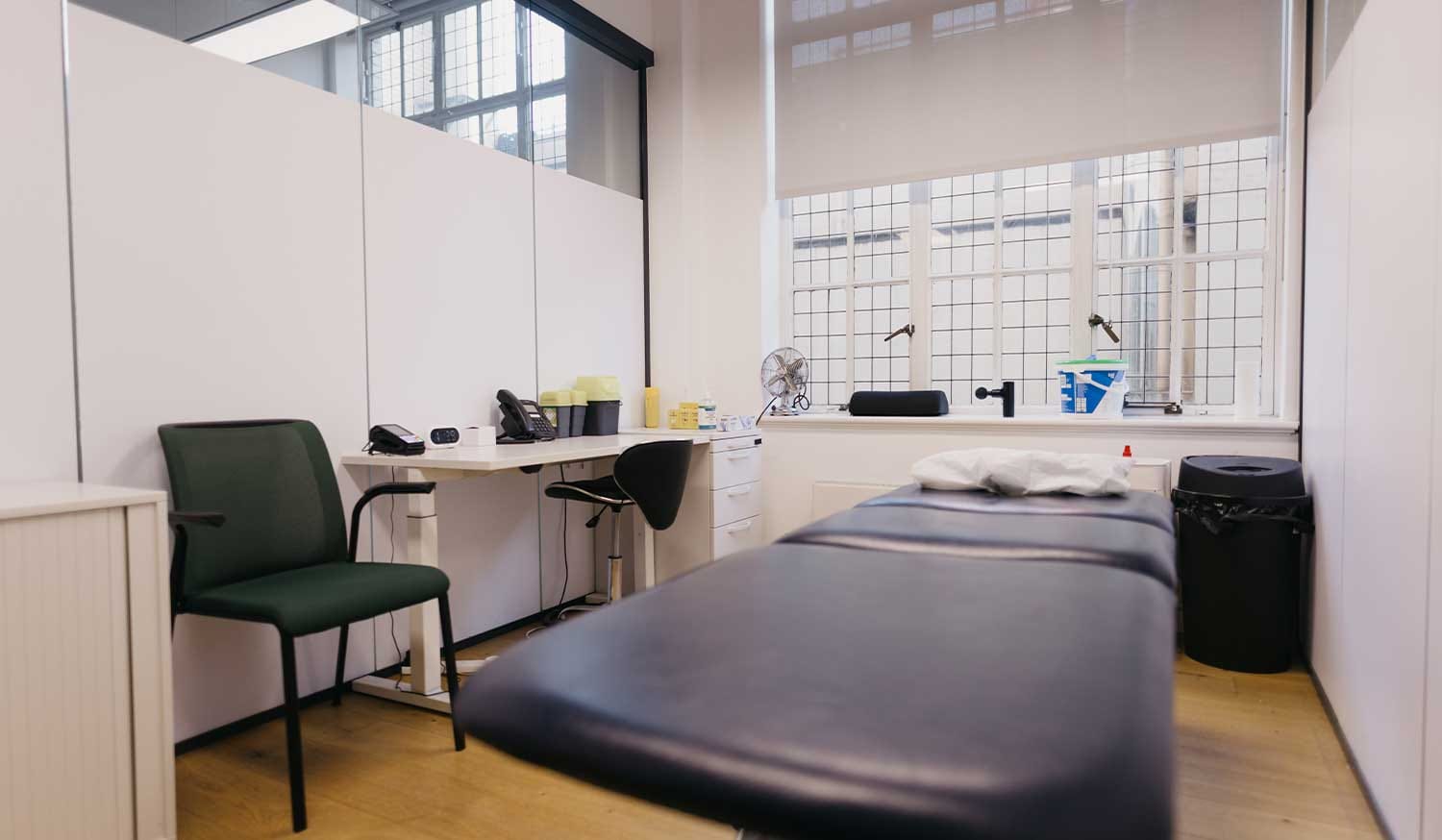Explore the evidence-based advantages of osteopathic spinal adjustments for pain relief, better mobility, and overall health. Discover how MHV Clinic’s expert osteopaths can support your wellness journey with safe, effective treatments.

In today’s fast-paced world, many people experience discomfort from daily stresses, whether it’s from sitting at a desk for hours or recovering from minor strains. Osteopathy offers a holistic approach to addressing these issues, particularly through spinal adjustments. But what exactly are these adjustments, and how can they contribute to your well-being?
This article delves into the science-backed benefits of osteopathic spinal adjustments, drawing on reliable UK sources to provide a clear, professional overview. Whether you’re dealing with a persistent backache or seeking ways to enhance your mobility, understanding this treatment can empower you to make informed health decisions.
At MHV Clinic in London, our registered osteopaths specialise in personalised care that aligns with the highest standards set by the General Osteopathic Council (GOsC). Let’s explore how spinal adjustments fit into osteopathic practice and why they might be a valuable addition to your health routine.
Osteopathy is a regulated healthcare profession in the UK, focused on diagnosing, treating, and preventing musculoskeletal disorders. Unlike some other therapies, it emphasises the body’s interconnected systems—muscles, joints, and spine—working together for optimal function. Osteopaths use hands-on techniques to promote natural healing, without relying on drugs or surgery.
According to the NHS, osteopathy aims to improve joint mobility, relieve muscle tension, reduce pain, and enhance blood supply to tissues, ultimately aiding the body’s self-healing processes. This patient-centred approach is overseen by the GOsC, which ensures all practitioners meet rigorous training and ethical standards. In fact, osteopaths must complete at least four years of full-time education, including clinical practice, to register.
What sets osteopathy apart is its holistic view. For instance, an osteopath might assess how a misaligned spine affects not just your back but also your posture, digestion, or even circulation. This comprehensive perspective makes it particularly effective for conditions like general backache or joint pains, as recognised by UK advertising guidelines.
Spinal adjustments, often referred to as spinal manipulation or mobilisation, are core techniques in osteopathy. These involve gentle, controlled movements applied to the spine to restore proper alignment and function. Unlike abrupt manipulations sometimes associated with other fields, osteopathic adjustments are typically low-velocity and tailored to the individual’s needs.
The process begins with a thorough assessment. Your osteopath will evaluate your posture, range of motion, and any areas of tension. Then, using precise hand placements, they apply techniques such as soft tissue massage, articulation (gentle joint movement), or high-velocity low-amplitude thrusts if appropriate. The goal? To alleviate restrictions in the spine, which can stem from poor ergonomics, stress, or everyday wear and tear.
Research from UK academic institutions supports these methods. A systematic review highlights that spinal manipulative therapy, including osteopathic approaches, can provide short-term improvements in acute or chronic low back pain, comparable to other standard treatments. Moreover, gentle mobilisations are considered safe for a wide range of patients, including adolescents, when performed by qualified professionals.
Importantly, these adjustments align with ASA guidelines, which permit claims for treating uncomplicated mechanical neck pain, general backache, and related joint issues, provided they’re backed by evidence. At MHV Clinic, our osteopaths prioritise safety, avoiding any techniques that could pose risks, such as in cases of recent injury.
To appreciate the benefits, it’s essential to understand the underlying science. The spine houses the central nervous system, which coordinates everything from movement to organ function. When vertebrae become misaligned—due to factors like repetitive strain or poor posture—it can irritate nerves, leading to pain or reduced mobility.
Osteopathic spinal adjustments work by restoring this alignment. For example, they can reduce muscle spasms around the spine, improve joint lubrication, and enhance neural signalling. A study from a UK university notes that spinal manipulation helps alleviate pressure on nerves, contributing to pain reduction in conditions like sciatica or lumbago.
Furthermore, evidence from the NHS indicates that these techniques encourage better blood flow, which supports tissue repair and reduces inflammation. Government guidelines, including those from NICE (National Institute for Health and Care Excellence), recommend spinal manipulation for short-term back pain episodes, often as part of a broader care plan.
However, it’s not just about immediate relief. Long-term studies suggest that regular osteopathic care can prevent recurrence by addressing root causes. A meta-analysis of osteopathic manipulative treatment (OMT) for low back pain shows reductions in pain levels, though more large-scale trials are needed to confirm broader applications. This evidence-based foundation ensures osteopathy remains a trusted option in the UK healthcare landscape.

Now, let’s break down the primary advantages, supported by UK-sourced research. These benefits extend beyond the spine, influencing overall wellness in meaningful ways.
One of the most sought-after benefits is pain reduction. For individuals with acute or chronic backache—not stemming from accidents—osteopathic adjustments can provide significant relief. By realigning the spine, they ease pressure on irritated nerves and muscles.
The NHS endorses this for conditions like uncomplicated neck pain or general back pain, where manipulation helps restore function. Additionally, for arthritic pain or rheumatic issues, adjustments serve as an adjunct to exercise and core treatments, improving hip and knee mobility from osteoarthritis.
For instance, patients with sciatica often report decreased leg pain after sessions, as the adjustments reduce nerve compression. A UK-based appraisal found good evidence that osteopathy offers advantages over conventional treatments for low back pain, especially acute cases. This makes it a practical choice for those avoiding medication.
Limited mobility can hinder daily activities, from bending to reach something to enjoying a walk. Osteopathic spinal adjustments enhance joint range of motion by loosening tight muscles and improving spinal flexibility.
According to academic research, these techniques are effective for minor sports injuries or muscle spasms, helping athletes return to activity sooner. Moreover, better posture is a common outcome, as alignments correct imbalances that lead to slouching or uneven weight distribution.
At MHV Clinic, clients frequently notice enhanced ease in movements post-treatment, aligning with NHS descriptions of increased joint mobility and relieved tension. This benefit is particularly valuable for desk workers or those with sedentary lifestyles.
Beyond targeted relief, spinal adjustments contribute to general wellness. They can help alleviate tension, difficulty relaxing, or even migraine prevention by addressing neck-related headaches.
The GOsC emphasises osteopathy’s role in promoting patient-centred care, which includes managing generalised aches, cramps, or neuralgia. Enhanced circulation from adjustments supports better tissue health, potentially aiding digestion or reducing fibromyalgia symptoms, as per allowed ASA claims.
In addition, the relaxing effects of treatment—through endorphin release—can improve sleep and reduce stress. A UK study on mechanisms of manipulation notes that these interventions positively influence pain perception and muscle function. For holistic health seekers, this integrates well with lifestyle advice like exercise.
While osteopathy is suitable for most adults, it’s also adaptable for specific populations. For pregnant women experiencing back pain or joint discomfort, gentle adjustments can provide relief without departing from general guidelines, provided evidence supports it.
However, for children or those with specific conditions, treatments must be evidence-based and avoid unsubstantiated claims. UK rulings stress the need for robust data in these areas. Always consult a registered osteopath for personalised advice.
Virtually anyone experiencing musculoskeletal issues could find value here, but it’s beneficial for those with office-related strains, active lifestyles leading to minor injuries, or age-related stiffness. If you have chronic back pain, neck tension from screens, or joint pains from arthritis, osteopathy might complement your routine.
That said, it’s not for everyone. Those with recent fractures, osteoporosis, or certain inflammatory conditions should discuss alternatives with their GP. The NHS advises that osteopathy is generally safe when performed by GOsC-registered professionals, with rare complications from spinal manipulation.
At MHV Clinic, we cater to diverse needs, from young professionals to seniors, ensuring treatments are tailored and evidence-informed.

Your first visit typically lasts 45-60 minutes, starting with a detailed history and physical exam. The osteopath will explain findings and propose a plan, which may include spinal adjustments alongside advice on posture or exercises.
Sessions are usually comfortable, though mild soreness (like after exercise) can occur initially. Follow-ups refine the approach, with many noticing improvements after 2-6 visits. Costs are often covered by private insurance, and no GP referral is needed.
For safety, our clinic adheres to GOsC standards, promoting transparency and patient education.
While benefits are well-documented, results vary by individual. If osteopathy isn’t suitable, alternatives like physiotherapy or acupuncture might be recommended. Always combine treatments with healthy habits, such as regular movement or ergonomic setups.
In rare cases, spinal manipulation carries risks like temporary discomfort, but qualified osteopaths minimise these through screening. Consulting reliable sources ensures informed choices.
Osteopathic spinal adjustments offer a proven, non-invasive way to relieve pain, boost mobility, and enhance wellness. Backed by UK evidence from the NHS, academic studies, and regulatory bodies, they represent a cornerstone of holistic care. At MHV Clinic, our expert osteopaths are committed to helping you unlock these benefits safely and effectively.
If you’re ready to explore how osteopathy can support your health, contact us today for a consultation. Remember, prioritising your spine’s health today can lead to a more vibrant tomorrow.